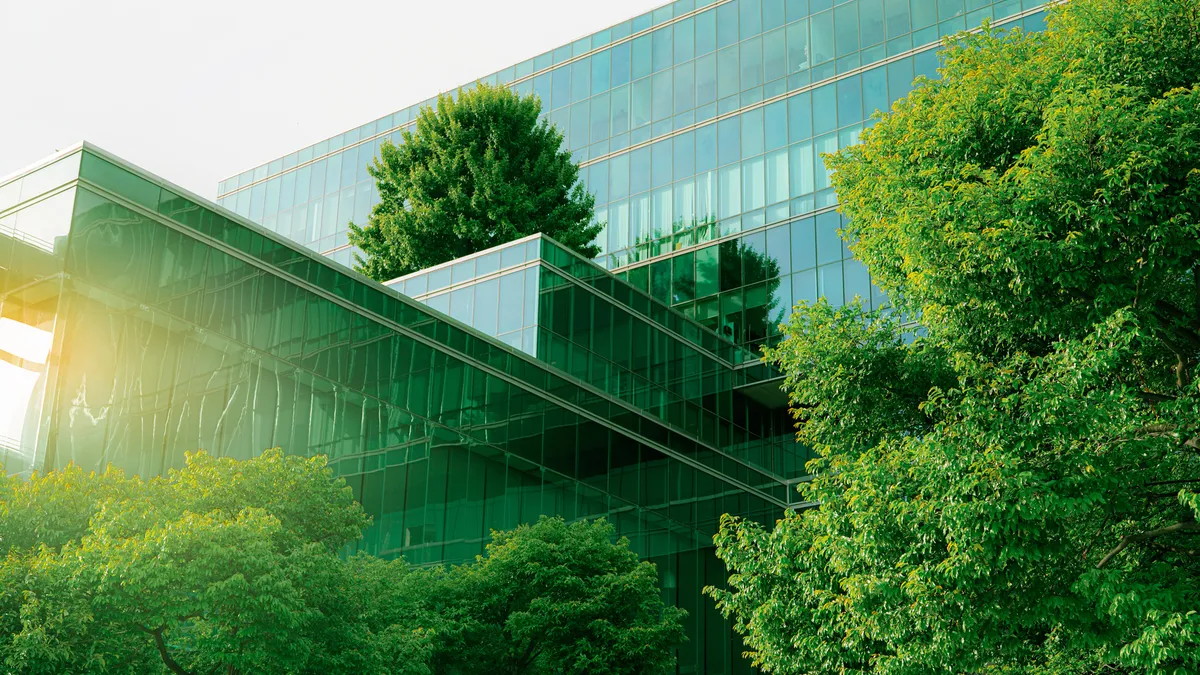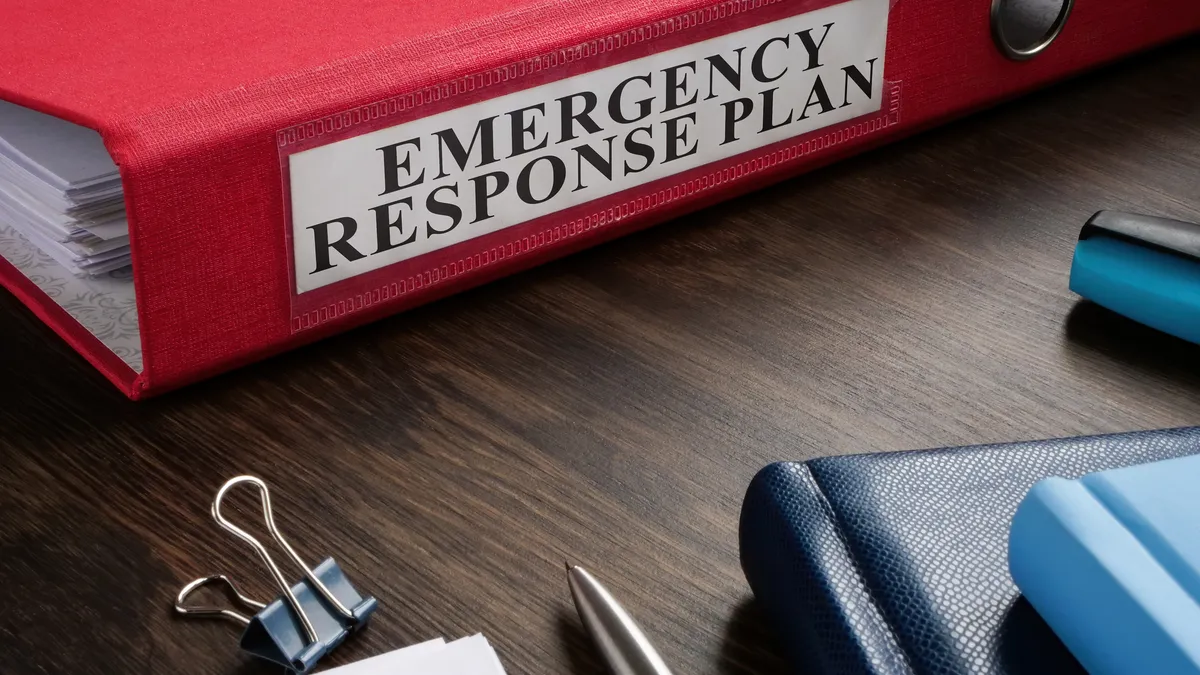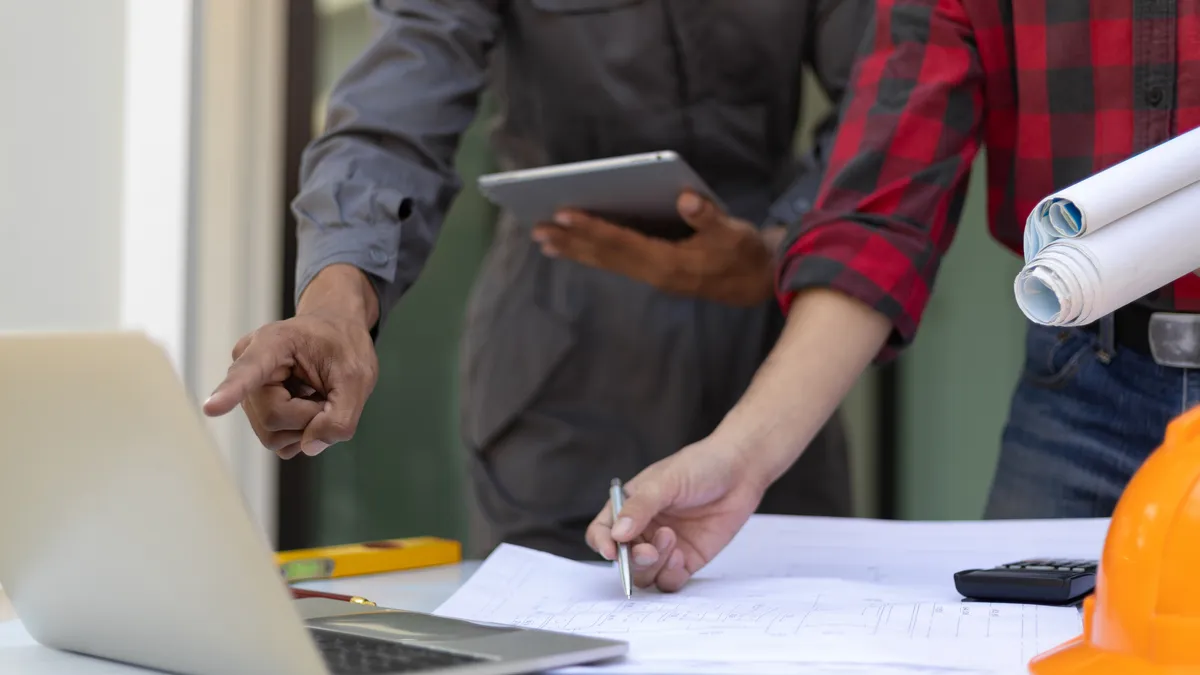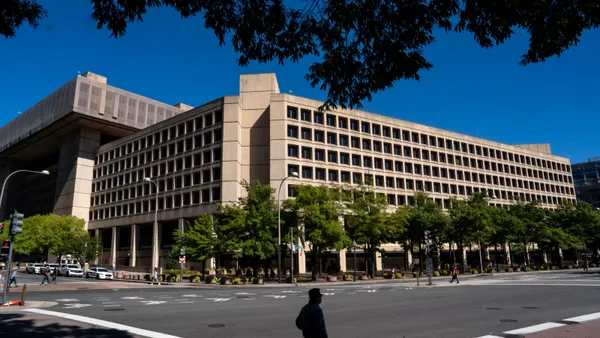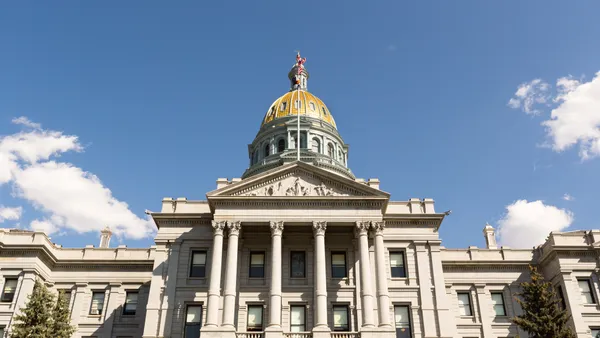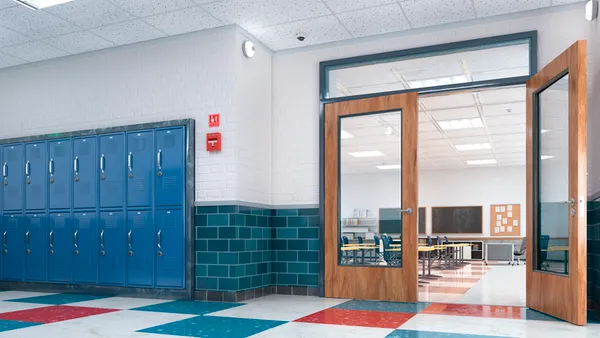Dive Brief:
- The U.S. Green Building Council published a draft of the fifth iteration of its Leadership in Energy and Environmental Design rating system Sept. 27 which addresses the operations and maintenance of existing buildings.
- The LEED v5 draft would require climate resilience assessment, social impact assessment and operational carbon projection for existing LEED-certified buildings as well as reduced emissions from embodied carbon, refrigerants and transportation.
- USGBC said the proposal sets new standards for addressing significant sources of carbon emissions in buildings, provides clear steps for buildings to achieve ultra-low greenhouse gas emissions, rewards existing buildings for plans to meet future decarbonization targets and incentivizes existing buildings to work toward ultra-low carbon and zero emissions plans.
Dive Insight:
The LEED rating system is a global benchmark for buildings to reduce their environmental impacts, with more than 100,000 projects certified worldwide. The LEED certification process offers a structured approach to creating sustainable, efficient and cost-saving green buildings that deliver environmental, social and governance benefits, according to the USGBC website.
Other new components of LEED v5 include a credit for continuous assessment and verification of measurable indoor air quality, including indicators for infection risk management; a focus on equity within cleaning operations and protections for cleaning personnel; and operational preparedness for extreme weather events.
LEED v5’s climate resilience assessment prerequisite proposed in the draft requires buildings to assess the effects of observed and projected natural hazards on project sites and building function. Such hazards include flooding, sea-level rise and storm surge, earthquakes, tsunamis, hurricanes, wildfires, droughts, landslides, winter storms, heat waves and other extreme weather events.
To address equity, LEED v5 asks teams to conduct a social impact assessment of their projects to “help identify and assess issues of inequity related to the project,” USGBC said in its draft report, such as by using a social impact checklist involving research and engagement with key stakeholders.
As part of its focus on decarbonization, the USGBC will provide a visualization of projected carbon emissions from building energy use through 2050 based on reported energy data. The council said this business-as-usual trajectory will assume constant building energy use and a change in carbon emissions from grid-supplied electricity as the project’s grid decarbonizes. National predictions, like the U.S. Environmental Protection Agency’s Cambium predictions for the eGrid subregions across the country, will be used to calculate default future emissions from grid-supplied electricity, the report said. However, projects can create a more localized trajectory based on their local grid’s future emissions data, as provided by the utility, the report noted.
Indoor environmental quality prerequisites the draft proposes would require either establishing an in-house green cleaning policy or choosing a certified cleaning service, including information on ventilation system operations and preventative maintenance systems, with investigative research on local and regional outdoor air quality and contaminants from surrounding areas that will be of concern to buildings.
Additional prerequisites in the draft include establishing a water policy for managing project water consumption, having permanently installed water meters that measure potable water use for projects and associated grounds and putting a materials management policy in place that address incoming and outbound materials.
Commercial building projects will get up to four LEED points if they install EV charging equipment in 20% of their total parking spaces, the draft report said.
“Through the LEED version 5, USGBC is working on supporting facilities managers, operators and building owners to create real pathways toward decarbonization,” USGBC’s senior policy counsel, Liz Beardsley, told Facilities Dive. “We’ve worked over the past year with our committees to translate the ambition of the Paris [Climate Change] Agreement with the core actions all buildings need to be [taking], with clear requirements, pathways, and accountability. It goes beyond LEED v4 in the suite of prerequisites for climate, equity, and resilience, and for existing buildings, in incentivizing pathways for improvement.”
LEED v5’s new standards are “an example of how third-party certification can align with the federal government’s proposed zero-emissions definition for buildings and go further,” Beardsley added. LEED v5’s efforts to align with this definition include requirements for LEED zero carbon and platinum-level projects that specify low to no-operational greenhouse gas emissions, USGBC said in its release.
The USGBC’s approach to providing tools and pathways for buildings and portfolios to reduce emissions and promote carbon sequestration involves drawing from the Future of LEED principles, published last June. This will involve leveraging ESG reporting frameworks, performance standards and local regulations, USGBC’s senior vice president, Melissa Baker, said during a briefing in July. For instance, its LEED version 4 update adds a greenhouse gas emission metric aimed at raising the threshold for energy performance.
A spokesperson for the USGBC said the council expects to release a rating system draft report for building design and construction in December or by early 2024.



